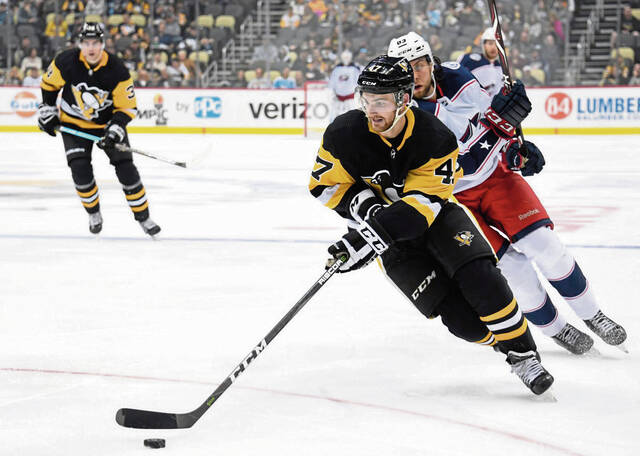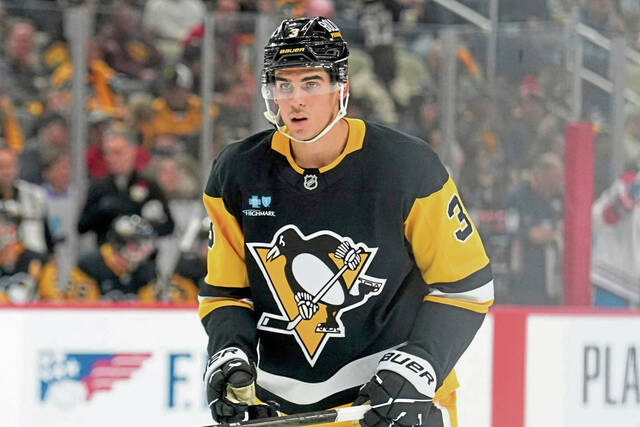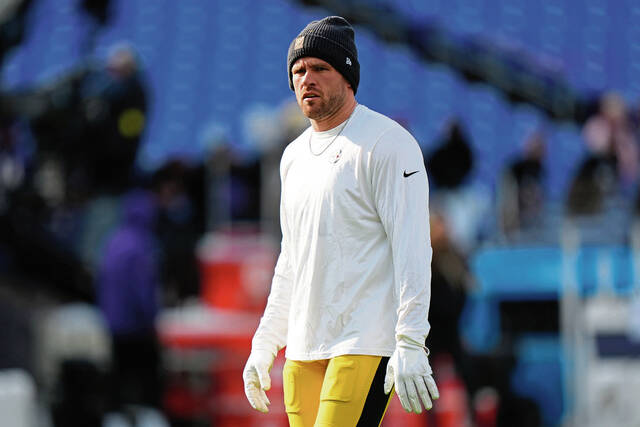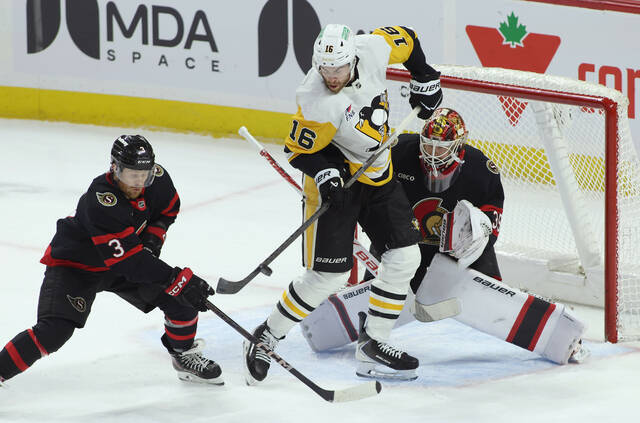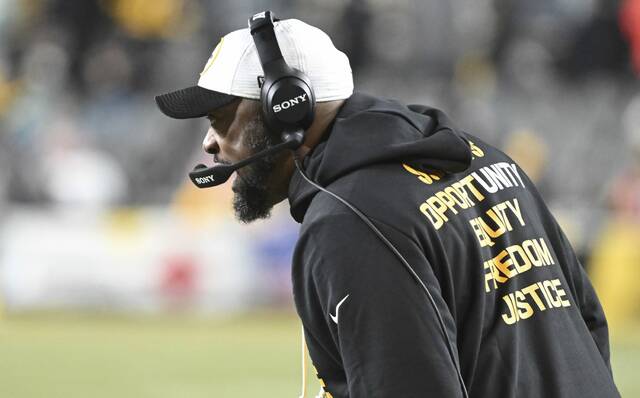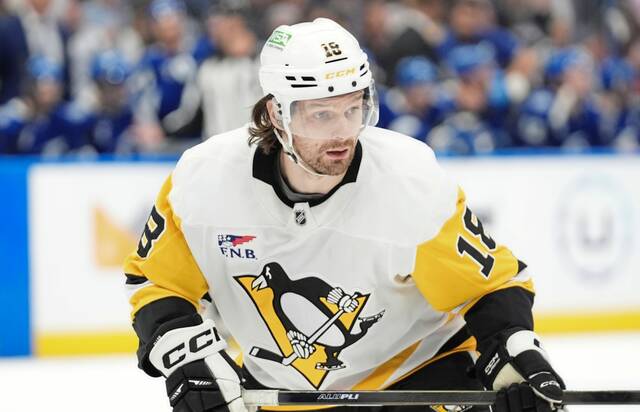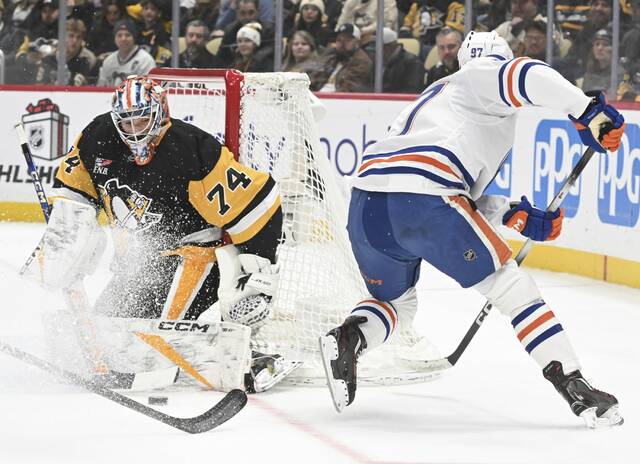Pittsburgh Penguins defenseman Marcus Pettersson has warm memories of Adam Johnson.
One in particular stands out.
Johnson’s first and only NHL goal.
During a 7-4 road win by the Penguins against the Minnesota Wild on Oct. 12, 2019, Johnson, a speed forward who grew up in Hibbing, Minn., scored on a rebound and it felt as if that entire town was present celebrating based on the eruption of cheers at the Xcel Energy Center in St. Paul, Minn.
Adam Johnson tallies his first NHL goal to double the Penguins lead!#LetsGoPens pic.twitter.com/NCJxW7zFHA
— Hockey Daily 365 l NHL Highlights & News (@HockeyDaily365) October 13, 2019
“It was great being there for his first goal,” Pettersson said. “Everybody was so happy for him. He was a guy that always came in with a smile. Everybody roots for a guy like that. Just a joyful (person) in the locker room. Always smiling. It was a great night to see. … How loud it was. I was so happy for him.”
Like just about anyone who crossed paths with Johnson, Pettersson was heartbroken over his former teammate’s shocking death just over a year ago.
While playing for the Nottingham Panthers of the United Kingdom’s Elite Ice Hockey League on Oct. 28, 2023, Johnson was struck on the neck by an opponent’s skate in a catastrophically fatal fashion.
He was 29.
In the days following Johnson’s death, various leagues at various levels of the sport around the world made neck guards and other cut-resistant equipment mandatory.
To date, the NHL does not as all rule changes largely require approval from the NHL Players Association (NHLPA).
Only a handful of Penguins players currently utilize neck guards.
“I’d like to wear one,” Penguins forward Lars Eller said. “But I haven’t found one yet that’s comfortable, that doesn’t bother my performance.”
Eller’s sentiment on the choices available appears to be a common theme among his peers.
“It’s more the (options) that are out there are maybe not comfortable,” Pettersson said. “I know it’s probably a bad thing to say but that’s I think what guys are used to. You see (Penguins forward Bryan Rust) wear it and kudos to him for wearing it. I tried it out a couple of times. I might try the undershirt that has it (built in).
Penguins defenseman Ryan Graves adopted neck protection in the immediate aftermath of Johnson’s death.
“I guess it’s one of those things you don’t need it until you need it,” Graves said. “Is it the most comfortable thing in the world? No. But if that was to happen (to himself), I’d probably be kicking myself. It really doesn’t bother me. It’s not like I’m the most stylish guy out there to start with.”
“I got cut on the chin a few years ago. That’s pretty close. It can definitely happen. It’s just one of those things that I (asked), ‘Why am I not?’”
While no hard figures exist, the vast majority of NHLers do not wear neck protection. Forward Jakub Lauko is the only member of the Wild who employs one.
As a member of the Boston Bruins last season, he took a skate to the face near his left eye four days before Johnson’s death.
“A few days after the (tragedy) with Adam happened, I just realized I didn’t want to run the risk,” Laukko said. “I was pretty close to something very bad. Just seeing what happened in England, I just didn’t want to risk it.”
Lauko wears an undershirt that has a neck guard built into the collar. Other neck guards are worn freely, almost like a bandana with Velcro.
“For pro players, it’s maybe a little bit uncharted territory,” Lauko said. “There’s not many players who wear those. It’s a little bit uncharted. But there’s more options now. … Hopefully, it’s going to get better and more players try (neck guards).”
The options and the rules regarding them are each a work in progress.
“There’s been strides taken there as far as availability and access to stuff,” Penguins forward Sidney Crosby said. “And probably just awareness. There probably was always access. It was probably the awareness that has obviously grown because of what happened.”
The Penguins mandated all players with their minor league affiliates — the Wilkes-Barre/Scranton Penguins of the American Hockey League and Wheeling Nailers of the ECHL — wear protection for the neck and wrists in the aftermath of Johnson’s death.
Beyond the NHL, the rules at the international level aren’t universal as of yet.
“We got a lot of questions at (the IIHF World Championship Tournament in the spring),” said Pettersson, a native of Sweden. “The players (who play professionally) in Europe had to wear them and we (NHLers) didn’t. A lot of us came over and didn’t wear them. A lot of talk about it. Still keep that conversation going and, hopefully, more guys can go with it. Maybe in the future, they make it mandatory. I wouldn’t have a problem with it.”
Forward Valtteri Puustinen wore neck protection during his professional days in his native Finland but shed it once he began playing with the Penguins.
He returned to using a neck guard after Johnson’s tragedy and estimated it took him 10 minutes to get reacclimated to the apparatus.
“Maybe we (did) not talk much (about) that before that happened (Johnson’s death),” Puustinen said. “After that, we see how big it is with that and of course, I did it.”
The NHL doesn’t exactly have a history of acting swiftly with regard to safety in the aftermath of tragedy. Most famously, the league ushered in mandatory use of helmets in 1979 following the death of Minnesota North Stars forward Bill Masterton in 1968. And that rule was given “grandfather” status, allowing players who were in the NHL before 1979 to continue to skate sans helmets.
A similarly grandfathered rule currently exists with a handful of players who don’t wear visors after the NHL mandated their use in 2013.
Something similar may happen with neck protection.
“You could grandfather it, like you did with visors,” Eller said. “I think that’s the way to go. Any life lost to that sort of tragedy is one life too many. There needs to be better options, choices. At some point, it should probably be mandated. It would be tragic to wait for another life to be lost.”
For the time being, most NHLers appear comfortable in making neck guards an option and not a requirement.
“I think it’s a personal choice,” Graves said. “It’s pretty rare that it happens. So, if guys don’t wear it, they don’t have to. It’s your own choice. It’s like the shot blockers (on skates) or the cut-proof socks or the wrist guards. If you want to wear it and you can’t play with it, do it. If you don’t want to, it’s your own choice.”


